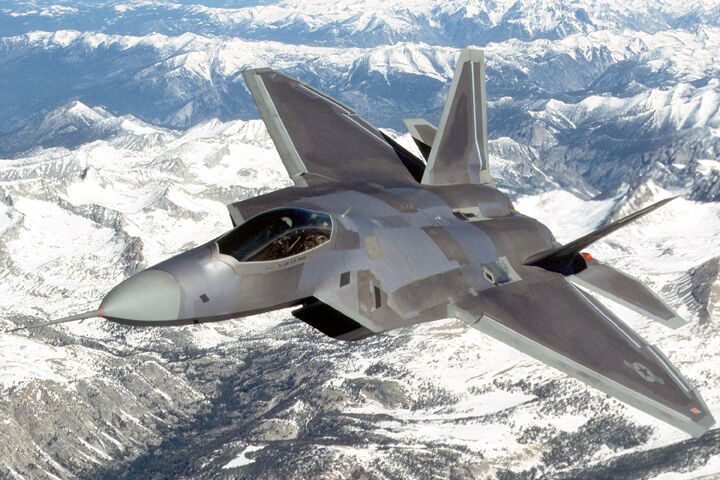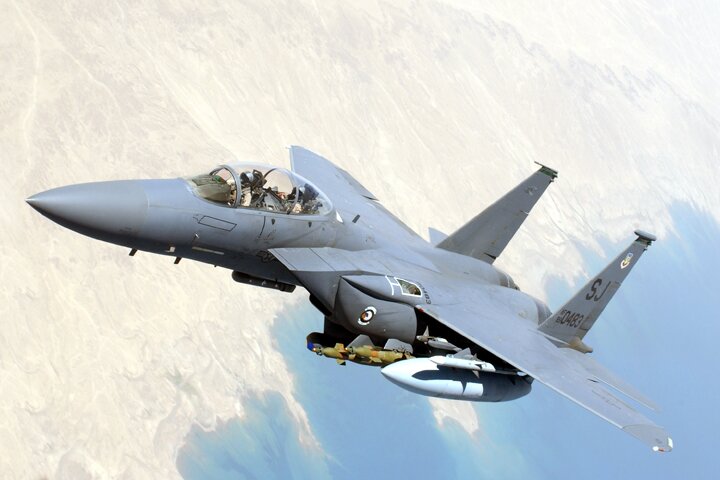
Congress Kills the F-22
Congress did what perhaps no plane in the sky could do: shoot down the F-22. The United States Senate launched a devastating surface-to-air missile at the world’s most-expensive fighter program on Tuesday, voting to cut off funding for the F-22 Raptor, a decision championed by President Barack Obama. This move is part of an overall change in military strategy that puts U.S. military dominance at risk.
President Obama made ending the $65 billion program a cornerstone of his defense budget, threatening to veto any defense funding request for acquiring any more F-22s beyond the 187 that have already been funded. The Senate took the threat seriously and voted to end funding for any additional fighters.
The price tag for each Lockheed Martin/Boeing F-22 is estimated at a hefty $350 million. It’s a steep price for air superiority, but for some U.S. Air Force officials, it’s worth paying.
“I think it’s a real mistake,” said Gen. Merrill McPeak (Ret.), Air Force chief of staff during the Gulf War. “The airplane is a game-changer …. It’s been half a century or more since any enemy aircraft has killed one [of our] guys. So we’ve gotten used to this idea that we never have to breathe hostile air.”
The F-15, the backbone of America’s current air power, is the most successful fighter jet in history, with a historical kill ratio in combat of 107 to 0. In this jet’s 30 years of service, it has never been shot down by an enemy plane.
With these steep odds, few nations dared challenge the usaf. In the first Gulf War, many of Saddam Hussein’s fighter jets fled to Iran, and the few that fought were destroyed. During round two in 2003, Saddam didn’t even try to fly. As Mark Bowden points out in the Atlantic, he “didn’t just ground his air force, he buried it.”
Not breathing hostile air is right.
The F-15’s tactical advantage, however, is diminishing. Countries that can’t build fleets of cutting-edge fighters are instead buying cheaper planes and equipping them with increasingly sophisticated military systems. These hybrid fighters are the biggest rival to American fighters yet, if not in quality then in quantity.

A large aerial-combat training exercise in 2004 that pitted the U.S. F-15 pilots against India’s air force highlighted the danger. “[W]e were facing a threat that we weren’t prepared to face, because we had underestimated them,” said Col. Terrence Fornof, a F-15 pilot. “They had figured out how to take Russian-built equipment and improve upon it.”
The American pilots found themselves overwhelmed by the large numbers of aircraft with new technology.
The production of hybrid planes has reduced the 30-year-long F-15 theoretical “kill ratio” from 8 to 1 down to about 3 to 1. This ratio is based on projections of how many enemy fighters the Eagle could shoot down before getting shot down itself if faced with an unlimited number of attackers at once.
In order for the Air Force to retain its current air dominance, independent analysts believe it needs 381 F-22s. Congress says its cart is full at 187. The Defense Department is instead concentrating on the F-35 joint fighter, a multi-role fighter. Air superiority is just one of the F-35’s many intended functions. Critics of the plane say it sacrifices performance in each mission area to be capable in the varied roles it needs to fill—a jack of all trades, master of none.
This change of focus is what Secretary of Defense Robert Gates wants. Gates fired Air Force Chief of Staff Gen. T. Michael Moseley and Air Force Secretary Michael Wynne for supporting the F-22. The congressional vote has settled the debate with a victory for Gates and the F-35, and extinction for the Raptor.

Gates’s support for the more flexible fighter was in part to prepare for a restructuring of the U.S. military. It is expected that the 2010 Quadrennial Defense Review, already under way, will end the requirement for the American military to be able to fight two simultaneous regional wars (Stratfor, July 22).
Gates is trying to compensate for the drawing down of the military’s capabilities by backing more flexible weapons. The F-22 is just one of the sacrifices being made for the change in strategy.
This is less than ideal for the Air Force. Even after the firings, Gen. John Corley, chief of Air Combat Command, expressed concern about the cutbacks in a letter to a senator. What makes the F-22 so critical is its ability to deter attacks, according to McPeak.
On the other hand, there are many military and government officials that agree with the decision. In such a politicized debate, there are many strong opinions for and against the F-22. For instance, rain can compromise its stealth abilities and the F-22 has not been used in the Afghan or Iraq campaigns because it lacks that function. The biggest complaint is the cost, but even the alternate of choice the F-35 is already running at $45 billion and its costs are still rising. Whether it will be cheaper than in the F-22 in the end remains to be seen.
Other fighter jets can be refitted as well, such as the F-18, but they have been sold to other nations, which means it won’t give the US the advantage it once had, since potential enemies could be flying the same jet.
One thing is certain though, the F-22 decision seen in the broader framework of the America’s move to end its capability to fight a two front war, is a discouraging trend for US military dominance.
Changing military strategy away from a two-front war capability means a less-capable, less-dominant U.S. military. Washington confidently assumes that the nature of modern war has changed and that there won’t be any future conflicts with countries stronger than the likes of Iraq or Afghanistan.
The F-15 made it nearly impossible for any nation to challenge the Air Force, but without a robust alternative to the aging F-15, nations will be more likely to challenge America’s air force and have a greater chance of success. However, the government appears to believe that the U.S. will rule the skies forever as a matter of course—even as it cuts back its ability to do so.
The government isn’t alone in its blind belief in this prediction: The main opposition to the Senate’s vote against the F-22 wasn’t about air dominance, but about the 90,000 jobs that would be lost.
While Congress is willing to spend billions to bail out banks, it’s not willing to pay the heavy price for continued air superiority. Air dominance is vital for America’s war-making abilities, and superior fighters are the centerpiece. American tanks, trucks and troops on the battlefield want the jets flying overhead to say “usaf” on their wings.
The U.S. has largely lost the will to use its incredibly superior military, and now it’s losing its will to even maintain its advantage.
The Trumpet has been able to accurately predict America’s loss of national willpower and its current fall from superpower status because of Bible prophecy. To learn more about these prophecies, read our book The United States and Britain in Prophecy. It explains why America is losing its willpower in military affairs and how such dangerous assumptions of continued greatness will prove completely incorrect. Pride comes before a fall, and America’s fall won’t come as a surprise for those who are willing to read and study Bible prophecy.
